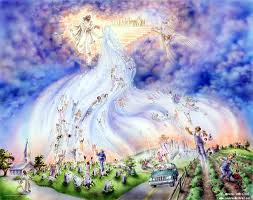Recently I’ve been reflecting on John Paul II’s Theology of the Body . http://www.ewtn.com/library/PAPALDOC/JP2TBIND.HTM
How do we relate this theology of the body with the vocation of consecrated virgins who are mystically espoused to Jesus Christ according to canon #604 ?
 A consecrated virgin accepts the call to love Christ as her one and only Spouse so that every other relationship will begin from Him. Her virginity is a gift, so that she should be united with Christ, in her body, mind, heart, spirit, all dimensions of her being. In a way the consecration calls her to image the mystical, Risen body of Christ, with whom she is legally espoused.
A consecrated virgin accepts the call to love Christ as her one and only Spouse so that every other relationship will begin from Him. Her virginity is a gift, so that she should be united with Christ, in her body, mind, heart, spirit, all dimensions of her being. In a way the consecration calls her to image the mystical, Risen body of Christ, with whom she is legally espoused.
The consecrated virgin is an eschatological image of the Heavenly Bride and the life to come when the Church will be fully united with Christ her Bridegroom. She makes present the fulfillment that humanity awaits through its redemption.
There is nothing that a married woman experiences in her relationship with her husband, which a consecrated virgin does not have in her relationship with Christ although in a different way, including the gift of sexuality in its femininity. However the nuptial dimension of the vocation does not end with romanticism.
Virginity is not only about spousal love. The gift of ones body to Christ has much to do in relation to service which is a sign of spiritual fecundity and motherhood. There cannot be motherhood and childbirth without suffering and pain .
 The consecrated virgin as an individual represents the body of Christ, the Church with Christ as its Head. This is another aspect of her vocation which differs from religious life. The religious community on the other hand, is an image of the body of Christ and the Church, as a community. Each member represents ‘one part’ of the body.
The consecrated virgin as an individual represents the body of Christ, the Church with Christ as its Head. This is another aspect of her vocation which differs from religious life. The religious community on the other hand, is an image of the body of Christ and the Church, as a community. Each member represents ‘one part’ of the body.
Over the centuries,there have been various spiritualties in the Church, mainly emphasizing the spiritual over the physical. e.g. St John of the Cross writes about the purification of the senses leading towards spiritual union of the soul with God. This can be read from the context of monastic life where the body has a role in asceticism. The nuptial dimension of the body is not emphasized. This relates to religious life in general.
In the Order of consecrated virgins, the role of the body is important in its nuptial meaning. That’s what gives the consecrated virgin her identity. But it is not limited to the body. It is a consecration of her whole being, every dimension of her life to God. Several theologians suggest that an ontological change is effected by the ‘prayer of consecration’ during the Rite of consecration to a life of virginity. It leads to the permanent nature of the consecration which cannot be dispensed.
Work becomes prayer. Every aspect of the body is consecrated, set apart for God and His works of mercy. Eyes- not only to avoid lust, but to strive to admire beauty in the universe, both inanimate and living creation of God, for His glory. To shed tears for the conversion of hearts.
Ears: to listen to God’s Word, to praise God through music, as a counselor to listen to people who pour out their suffering and seek consolation.
 Mouth: to speak His Word and good words, to eat what is good for one’s health, and also enjoy and praise God, without overindulgence. Both feasting and fasting as a body-prayer. Lips to smile at enemies and friends.
Mouth: to speak His Word and good words, to eat what is good for one’s health, and also enjoy and praise God, without overindulgence. Both feasting and fasting as a body-prayer. Lips to smile at enemies and friends.
Feet: to walk on beautiful earth and also the dirty streets where duty and service can call us to go for love of our fellow-human beings.
Human Heart: to love one another as Christ has loved us.
To offer all suffering due to daily labor, sickness, etc. to God.

of a consecrated virgin
is set apart for God’s glory,
for His Kingdom.
But this is only possible
by following Christ
in the Gospel,
in His Incarnation-
the Infinite and Invisible God
become human in the Body-
immersing Himself in this world,
as He worked,
loved,
healed
–following Him
on the way of the cross,
in His crucifixion,
death
and resurrection
for the salvation
of the whole world. 





